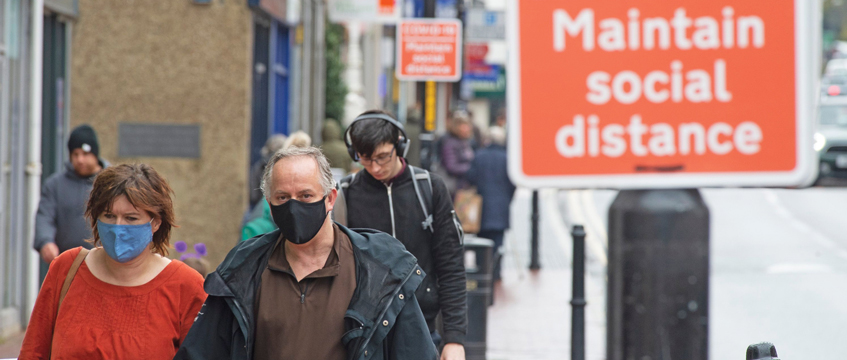Back in January, before anyone had Googled what ‘furlough’ meant, as a 12-year-old business we embarked upon a search for our first company vision.
This was spurred by two main factors. Firstly, our high streets and shopping centres had changed so much since we first entered the market. It’s clear that these spaces are facing an identity crisis – what’s needed from them is changing far quicker than they can.
Secondly, we were changing as a business. We’ve always been a values-based organisation, and we knew that as the team grew it was even more important to hold ourselves accountable to this.
Local re-engagement
Establishing a vision felt like a natural and necessary progression. We gathered views from every corner of the business and looked realistically at where we could make an impact. We knew we could influence physical environment for our visitors and employees, as well as contracts and the way we partner.
Several common themes emerged about what we believed delivered the best results for our clients: inclusivity, long-term strategy, the concept of legacy, the environment and returns.
There was, of course, a perceived conflict of championing community needs while delivering investment performance for our partners – priorities too often seen as opposite ends of a spectrum. A balance was needed, and with this we happily arrived at the cornerstone of our vision: creating the UK’s most sustainable and inclusive communities.
Sustainability is growing beyond environmental debate in retail, with focus turning to purpose and longevity. Many places that were once the heart of their communities have experienced a disconnect. Healthy environments can adapt with fluctuations and natural change. But when our high streets can’t respond to changes in consumer behaviour or are shaped by stakeholders without a long-term community prerogative, they become fragile.
Places that don’t have a clear way to serve their community aren’t robust. Where there’s genuine amenity in place, footfall and spend are stronger. Without this, performance as an investment asset will stall. When we look at ‘performance’ through the context of sustainability, everyone’s interests become much more aligned.
With so many alternative and online retail options, our physical environments can’t limit themselves to how we shop but must reflect how we live. The answer starts with truly understanding what local shoppers, residents and workers want. We begin by looking at the data and engaging with all stakeholders, especially the ones who often don’t get heard, to make sure they have an active voice and influence. Inclusivity begins here: we mustn’t limit our gaze to the highest incomes or foist ‘inclusive’ interventions onto these spaces as an afterthought.
The identity crisis we see in high streets took root through disenfranchisement. If a positive can be taken from the pandemic, it’s a visible shift towards localism: consumers are showing a willingness to fight for and re-engage with local businesses.
Helping change happen
We need to start viewing our town centres’ high streets as ‘eco-systems’. With communities’ needs changing quickly, place design and occupational structure needs to adapt – empowered by an equally agile planning framework.
Historically the investment dilemma for sustainability has been the upfront capital required without any short-term return. In three to five-year traditional investment horizons, it’s challenging to implement and get ROI within timescales, but there are encouraging moves in parts of the investment industry towards more sustainable and socially conscious solutions.
Perhaps one of the most significant changes needed is a re-think of the relationships between high street stakeholders. Current leasing strategy is definitively unsustainable: landlords and retailers will need to take risks together with a more open, partnering approach to overcome the present stalemate.
As a business, we feel strongly that our vision couldn’t have arrived at any other conclusion. Sustainability, inclusivity, and community aren’t just the ‘best’ practice for successful places, they’re the key drivers for their performance.
Ruth Moorhouse is director of asset management at Ellandi











